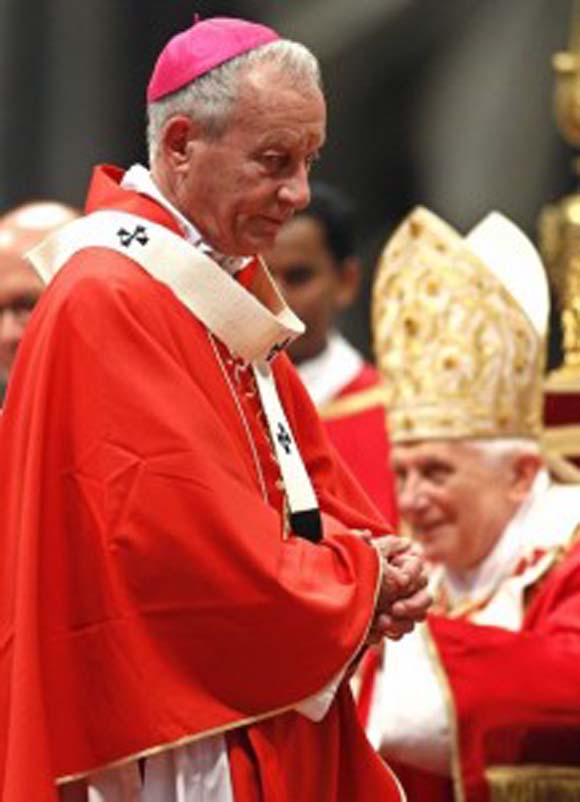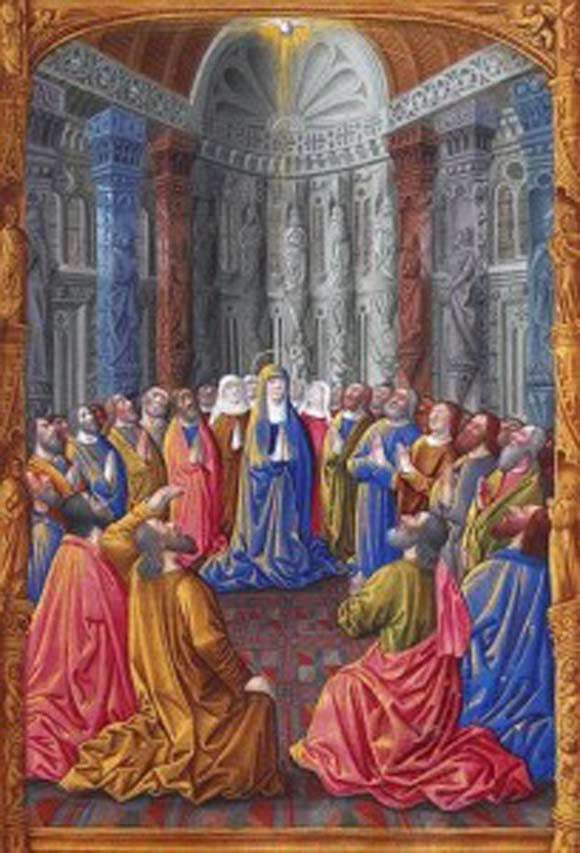
A-Z of the Mass: ‘N’
717
There are a number of places in the rite of the Mass where the designations ‘N’, or ‘N and N’, appear. This is to indicate that certain individuals should, or may, be named at these places. The ones who should be named are the Pope and the Bishop in whose diocese the Eucharist is being celebrated. Thus in the second Eucharistic Prayer we say:
 Lord, remember your Church through the world;
Lord, remember your Church through the world;
make us grow in love,
together with N our Pope,
N our Bishop, and all the clergy.
In the third and fourth Eucharistic Prayers it is phrased slightly differently but the point is the same: we are in communion with the local bishop, and with the bishop of Rome, and we acknowledge this during the Mass. So we know where we are and who we are associated with in the celebration. Our communion in the Body and Blood of Jesus is a communion also in the Church which is Christ’s body, and so we acknowledge the faith we share and the obedience we give to those who have been entrusted with preaching the gospel and serving the Church’s unity.
In the first Eucharistic Prayer there is also a naming of the Pope and the local Bishop though coming now before the consecration. But there are two other namings here. One is of those who are alive and for whom the community wishes particularly to pray:
Remember, Lord, your people, especially those for whom we now pray, N. and N.
The other is a naming of the dead for whom the community wishes particularly to pray:
Remember, Lord, those who have died and have gone before us marked with the sign of faith, especially those for whom we now pray, N. and N.
It is rare to hear anybody actually being mentioned by name at these points. It may be that over time these commemorations of the living and the dead in the Roman Canon made the ‘prayer of the faithful’ or ‘bidding prayers’ less necessary. Experience now is that individuals, living and dead, will often be mentioned in the prayer of the faithful rather than during the Eucharistic Prayer. But it does still happen, where particular intentions are remembered at a celebration of Mass, for example, the anniversary of a couple’s marriage, or the anniversary of somebody’s death.
In a Funeral Mass the individual or individuals who have died should be mentioned by name in the Eucharistic Prayer: ‘Remember N whom you have called from this life’ (EP II), ‘Remember N. In baptism he/she died with Christ: may he/she also share his resurrection’ (EP III). This may well be experienced as the most urgent naming that we do, as we ask God to remember the one who has died and to enter that person’s name in the book of the living.
 The first Eucharistic Prayer gives us a list of saints and martyrs who are to be mentioned by name. These are the most important saints of the early Church: Mary, Joseph, John the Baptist, Stephen, the apostles, and other confessors and martyrs, many of them Roman saints. The third Eucharistic Prayer gives the option of naming a saint, ‘Saint N’, the saint of the day or a patron saint. It has become customary also for the second and fourth Eucharistic Prayers to include the naming of a particular saint (or even saints).
The first Eucharistic Prayer gives us a list of saints and martyrs who are to be mentioned by name. These are the most important saints of the early Church: Mary, Joseph, John the Baptist, Stephen, the apostles, and other confessors and martyrs, many of them Roman saints. The third Eucharistic Prayer gives the option of naming a saint, ‘Saint N’, the saint of the day or a patron saint. It has become customary also for the second and fourth Eucharistic Prayers to include the naming of a particular saint (or even saints).
The Church is a community of people, not a philosophy or an ideology. The holiness of the Church is found in the lives of individual men and women, and the responsibility for teaching and governing the Church is entrusted to individual men. Naming such individuals in the course of the Eucharist reminds us of the communion we share, a faith and a way of life that is not abstract but is seen in the virtues, needs, and responsibilities of individual Christians. We must eat and drink while ‘discerning the body’, Paul says when he speaks about the Eucharist in 1 Corinthians 11. It is clear that he means both the Body of Christ present in the bread of the Eucharist and the body of the believers who through participation in the Eucharist become ‘one body, one spirit in Christ’.


